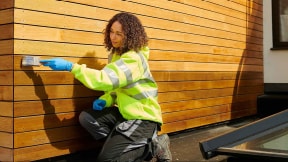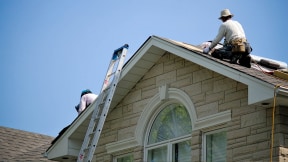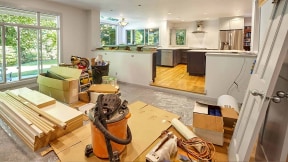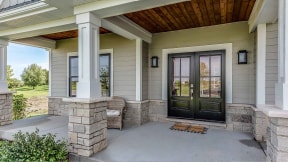How to make your home pet safe
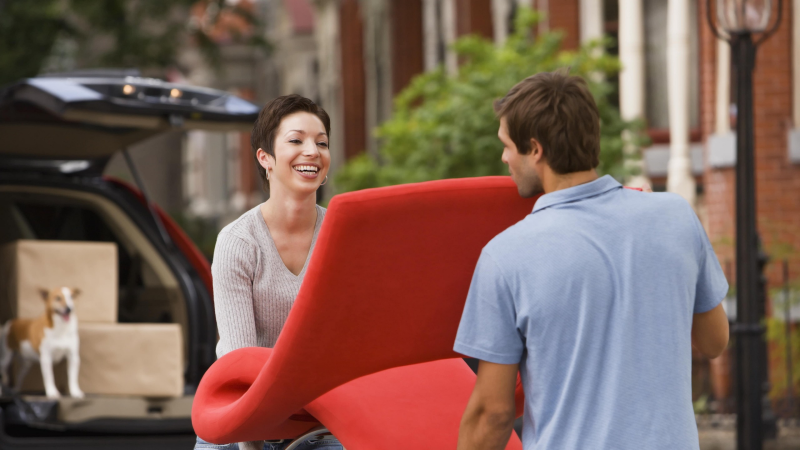
For many, a home without a furry friend isn’t much of a home at all. Nothing matches the unconditional love and companionship that comes with it. But a home with a furry friend is also one that pays critical attention to detail — without it, you have a bathroom covered in toilet paper and a raided snack cabinet!
A pet safe home will keep your animal and the integrity of your home safe.
Having a pet-friendly home
The definition of a pet-friendly home is a home that prioritizes the safety of a pet. Taking care of another living being’s life can keep you on your toes, especially with how crafty pets can be! Your cat can and will jump higher than you’ve ever imagined, and they’re surprisingly nimble. Your dog will invade almost any space possible... and may enjoy the toilet water, chewing doorframes, and digging holes in the yard along the way.
The bottom line is that these animals are curious and even smarter than we realize! There are some ways we can set healthy boundaries for both your pet and your home’s wellbeing.
Keeping your living room pet safe
Your living room is likely where you spend most of your time. It’s where friends and family, and therefore your pet, come to gather. Here are some things you can do to make your living room pet safe:
- Cover up any exposed electrical cords or outlets.
- Put a couch cover over your sofa if you want to avoid stains or damage. Some people put sheets of tinfoil around the couch to deter their pet from climbing on when no one's around.
- Keep valuables out of reach, at least until your pet has been trained.
- If you have plants, make sure they aren’t poisonous to your animal. If they are, get rid of them or put them in a place that’s impossible for your pet to access. Be extra careful with cats — they can jump even higher than you think, remember?
- Stay tidy overall. Vacuum frequently, and double check any hidden nooks and crannies within your animal’s reach.
Pet proofing your kitchen and bathrooms
Kitchens and bathrooms can be particularly hazardous to pets. Food like onions, grapes and chocolate, various cleaning products, and many other household items can be extremely dangerous. To avoid a trip to the animal hospital, your kitchen and bathroom pet proofing must be top tier.
- Keep cupboards and pantry doors closed when you’re not using them. If you have a dexterous dog or cat, consider child locks.
- Make sure any poisonous or harmful foods are put away properly.
- Stow away hazardous cleaning supplies, bug repellents and medications in an area your pet cannot access.
- Cover or stow away all garbage and recyclables.
- Keep the toilet seat closed to avoid your dog using it as a water fountain or to help your cat avoid an accidental dip!
Pet proofing your bedrooms
The easiest way to pet proof bedrooms is to put a gate between the upstairs and downstairs, or in the hall that leads to your bedrooms if your home is one floor. You can also simply keep your doors closed. If your pet roams freely, here are some things you can do:
- Keep food, medicine and other hazardous materials off bedside tables and other surfaces your pet can reach.
- Give them a space that’s their own. For example, a bed and toys on the floor at the foot of your bed. You can train them to enjoy this area by guiding them there with treats.
- Keep your clothing and personal belongings behind the closet door.
- Like the living room, cover any exposed electrical cords or outlets.
- Make sure your floors are rid of any buttons, bobby pins, dry cleaning and other harmful objects they can get their paws on.
Pet proofing your backyard
For outdoor pets, the final and hardest area to pet proof is your backyard. Although you can’t control the insects and animals that make an appearance, you can do things like:
- Make sure your yard is fenced in properly, or that your invisible fence is working.
- Avoid harmful pesticides and landscaping products.
- Remove any poisonous plants and research before planting new.
- Call your vet to see if they need any additional shots or vaccinations.
- Remember to consider hazards specific to your backyard, like swimming pools, lakes or ponds.
We hope these tips help you keep your home and your pet safe!
